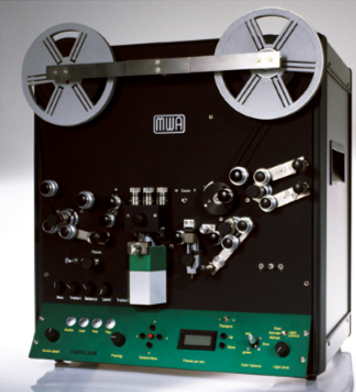movie scanner
Film scanners or film scanners are used to scan transparent image media such as slides, films or negatives and convert an adequate graphic or video file format.
The difference between the two types of devices is that the film scanner works in real time, while the film scanner does not necessarily. The resolution of film scanners can be higher than that of film scanners because they have more time available for scanning and quantization.
In film scanners and film scanners, the film is passed in front of a CCD sensor or a light spot scanner, scanned and digitized. In the flying spot process, an electron beam writes a bright light spot line by line on a screen. With the resulting raster, the film is illuminated from behind and converted point-by-point into an electrical signal in an O/E converter. The voltage changes of the signal correspond to the brightness values of a film image.
Since transparent media have a much higher dynamic range than paper media, the transparent primary material can be scanned at a much higher resolution. All films are more or less damaged, dusty and scratched. To correct these damages, there are image processing programs with which films, negatives or slides can be freed from scratches or dust after scanning. In order to be able to remove scratches at all, they have to be detected. This is done with a separate infrared channel that scans the film material with infrared light during scanning. The programs used for the correction improve the digitized film material considerably with their correction algorithms.
Other scanner programs rely on the correction of the colors in order to restore the colors of faded film material and slides. Still other programs smooth the graininess of older film material.

